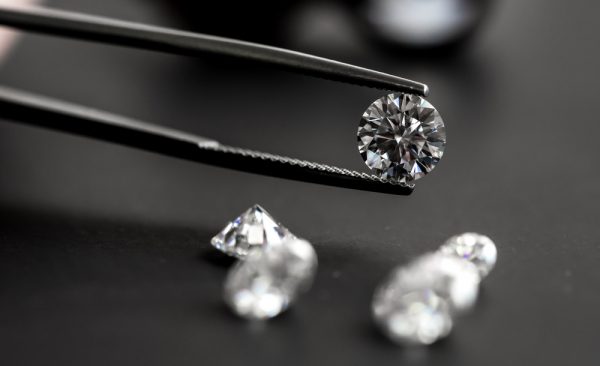You must make a number of choices when shopping for a diamond. How much do you want to spend? What diamond shape are you interested in? Is color, cut, clarity, or carat more important to you? All these questions must be answered. But first, buyers must decide whether or not they want natural or lab-grown diamonds.
Lab-Grown vs. Natural Diamonds
As the name suggests, a lab-grown diamonds is one that grows in a laboratory not in nature. Natural diamonds are created from carbon in Earth’s upper mantle and take more than 1 billion years to form. Natural diamonds can only grow under certain environmental conditions, and are therefore extremely rare. But now, scientists have found an alternate to mining diamonds from Earth. Scientists can recreate these special environmental conditions in the laboratory to make diamonds in the short amount of time it takes to make them in nature. The result is a lab-grown diamond, which looks and feels much like a diamond that forms in nature.

The Pros and Cons of Buying Lab-Grown Diamonds
Lab grown diamonds aren’t as expensive as natural diamonds which is why many buyers are interested in them. Both types of diamonds are lovely, and it’s difficult for the untrained eye to tell whether or not a diamond has been created in a laboratory or in nature. However, this doesn’t mean that buying a lab diamond is the same as buying a natural diamond.
There is something romantic about an engagement ring made of natural diamonds. However, many ladies feel that a ring with a lab-grown diamond does not feel romantic. The diamond was quickly created in a sterile laboratory, which sounds far less romantic than forming billions of years deep within the Earth. Plus, natural diamonds are often seen as symbols of strength, resilience, and rarity, but lab-grown diamonds aren’t. If you want to ensure the engagement ring you choose sends the right message to your partner, choose a natural diamond over one grown in a lab.
There’s no scarcity of lab-grown diamonds in the world—they can be made quickly and inexpensively in a controlled laboratory environment. The same can’t be said for natural diamonds, which are known for their rarity. Because natural diamonds are so rare, they’re extremely valuable. A natural diamond retain their value over the years—sometimes, they even increase in value—meaning you should not have any problem reselling the diamond in the future. But, lab-grown diamonds have nearly no resale value. It does not cost much up front as it isn’t a valuable asset that can be resold in the future. This is one of the various reasons why experts recommend all the time buying natural diamonds over lab grown diamonds.
As you can see, there are numerous reasons why natural diamonds are preferred over lab-grown diamonds. Take a look at this infographic to find out how these diamonds naturally formed over time:













